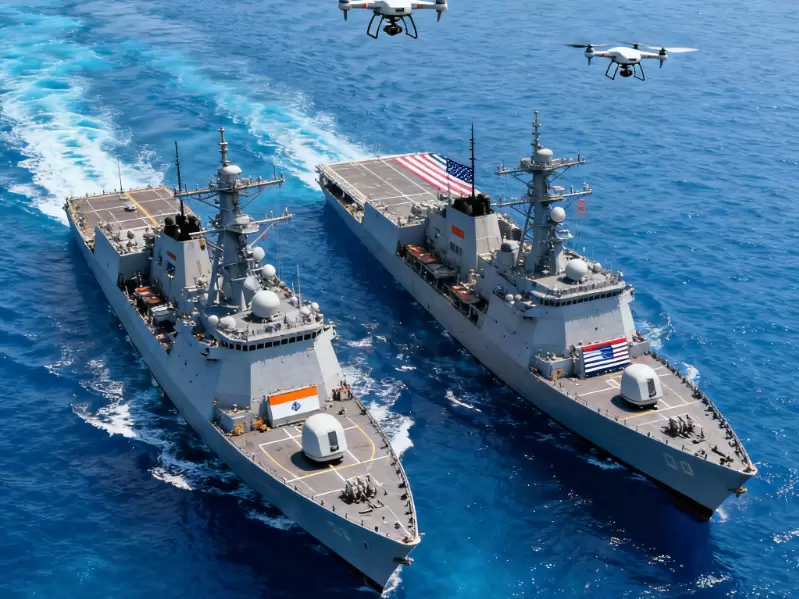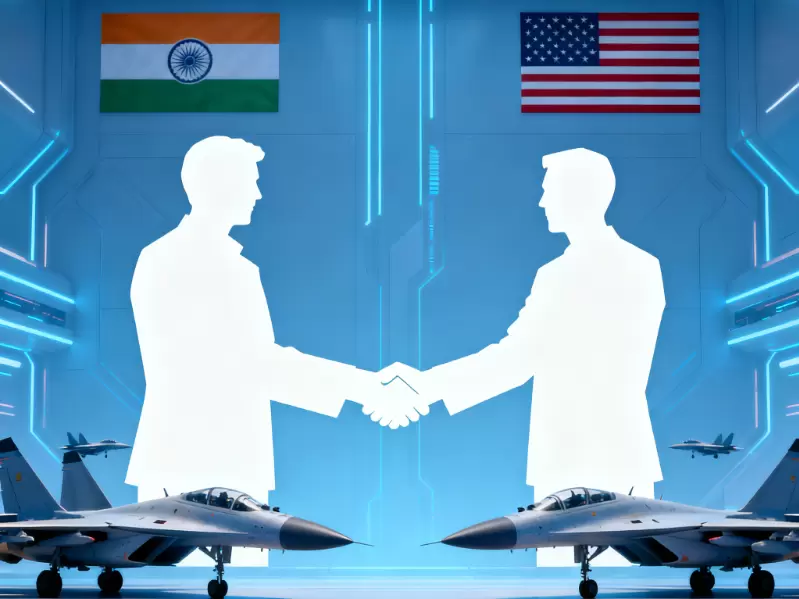India-U.S. maritime cooperation
The inaugural India-U.S. military exercise, code-named MALABAR, took place in May 1992, focusing on basic naval cooperation.
 Representative Image / Generated using AI
Representative Image / Generated using AI
During the Cold War decades, the India-U.S. relationship was described as one between ‘estranged democracies’—a title also given to a definitive book on the subject by veteran U.S. diplomat Dennis Kux.
It was a paradox that despite the U.S. championing the cause of democracy and seeking to ‘contain’ the former USSR and the spread of communism, the world’s oldest and largest democracies were estranged due to their divergent perceptions and the policies they pursued, apropos their abiding national security and strategic interests. At the core was the complex nuclear issue, wherein India remained a non-signatory to the nuclear non-proliferation treaty (NPT).
The Cold War ended in an anomalous manner (not a shot was fired) in December 1991, and the Soviet Union imploded, and a truncated Russian Federation was born. Global geopolitics underwent a tectonic change with the U.S. emerging as the sole superpower, and major power relations were rewired.
The year 1991 marks the formal start of India–U.S. defense cooperation, including military exercises, with the Kicklighter Proposals, initiated by Lt. Gen. Claude M. Kicklighter, then Deputy Chief of Staff of the U.S. Army. From Washington’s perspective, these proposals aimed to foster military-to-military ties with India, a non-aligned nation wary of engaging with the U.S. due to Delhi’s historical ties with Moscow.
India, with its history of non-alignment, was cognizant of the radically altered global geopolitical and strategic framework, and then Prime Minister PV Narasimha Rao embarked on a cautious path of engagement with the US in the military domain. Substantive defense cooperation was an aspirational objective, and the initial template outlined joint training and exercises, staff exchanges, and defense consultations—the goal being to slowly remove the trust deficit.
The Navy was the first service to grasp this opportunity & the inaugural India-U.S. military exercise, code-named MALABAR, took place in May 1992, focusing on basic naval cooperation. These were modest in nature: basic maneuvers and bilateral exercises, emphasizing interoperability through communication drills and search-and-rescue operations.
Progressively, the Malabar umbrella became more expansive in scope and also included other nations such as Japan and Australia – nations that were to become part of the Quad two decades later.
In the aftermath of 9/11—the audacious terrorist attack on the U.S. by al-Qaeda in September 2001—the U.S. military was deployed in the Indian Ocean, and the Indian Navy escorted American nuclear submarines through the Malacca Strait, thereby freeing up US warships for other operational tasks. This modest operational engagement with the U.S. burnished Delhi’s profile as a credible security provider in the extended Indian Ocean region (IOR) and (in my view) laid the foundation for a more robust U.S.-India partnership.
The turning point in the still ‘estranged’ bilateral relationship was the radical squaring of the circle by then US President George Bush, who in 2005 arrived at a determination that India had to be accommodated in the global nuclear weapon tent—till then the exclusive privilege of the five permanent members of the UN Security Council.
Thanks to the stoic resolve of President Bush and then Indian PM Manmohan Singh, in late 2008, the U.S.-India nuclear nettle was finally set aside, and the relationship moved from bitter estrangement to one of cautious engagement. A page had been turned, and in the decade that followed, the India-U.S. defense partnership gained considerable traction.
Within this larger framework, the maritime/naval component has emerged as one of the strongest pillars and has survived periodic political rough seas. The bilateral framework slowly expanded to become the Quad – the U.S., India, Japan, and Australia.
While not explicitly stated, the Quad was envisioned as a group whose collective capabilities would serve to temper China’s maritime assertiveness—a pattern already on display in the South China Sea. In essence, the maritime domain was seen as most conducive to ‘burden-sharing’ without India becoming a formal US military ally.
India’s distinctive maritime geography gives it a favorable position in the IOR, and the Indian Navy can effectively ‘police’ the critical sea lines of communication from the oil-rich Persian Gulf to the Malacca Strait.
In summary, the India-US defense partnership and the naval component enable both nations to shape maritime stability and security in the Indo-Pacific region. This includes deterring coercion, enhancing collective response capabilities, and promoting a rules-based order.
However, the most recent tension in the bilateral relationship over tariffs and Russian oil has roiled the waters – but hopefully the long-term, shared objectives in the maritime domain will be nurtured by strategic perspicacity.
The author retired from the Indian Navy after 37 years’ service, and currently is a security analyst and noted columnist.
(The views and opinions expressed in this article are those of the author and do not necessarily reflect the official policy or position of New India Abroad)
ADVERTISEMENT
ADVERTISEMENT
E Paper
Video



 C Uday Bhaskar
C Uday Bhaskar













Comments
Start the conversation
Become a member of New India Abroad to start commenting.
Sign Up Now
Already have an account? Login